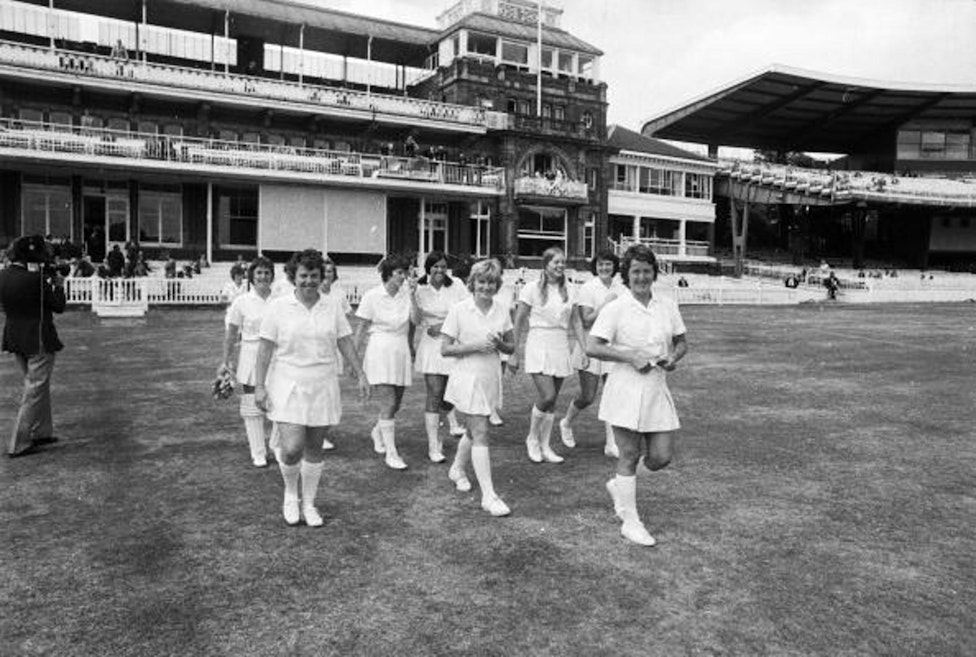 ON THIS DAY
ON THIS DAYThe first player to score a double century in ODI cricket: Belinda Clark✅
The first team to score 400+ runs in the ODIs: Australia women✅
The first-ever World Cup in the history of cricket: Women's World Cup in 1973✅
India: A land where cricket is followed like a religion by almost every single individual and a brewing topic of discussion over a hot cup of drink. However, if you walk around the street and ask any layman about these three questions, the answer would undoubtedly be:
Sachin Tendulkar❌
Australia in 2006 at Johannesburg❌
1975 World Cup in England❌
Well, not the fault of the fans across the world as women's cricket has forever lived in the shadows of their male counterparts before slowly coming into their own in the early part of this century.
While the world witnessed the Women in Blue create history in the 2017 World Cup at the Home of Cricket or showcasing their skills in front of a capacity crowd at the Melbourne Cricket Ground in 2020, there was one person in the quiet city of Pune grinning ear to ear with a sense of pride and most importantly satisfaction to see women's cricket grow by leaps and bounds.
Mahendra Kumar Sharma: The pioneer of women's cricket in India
And since I come from the city of Mumbai, which is known for multi-national companies and Bollywood bigwigs, in a typical filmy way, I could have just said, naam to suna hi hoga.
But knowing that not many people know about this great person, it is time to introduce him to you.
In the early 1970s, girls in Australia, England and New Zealand played cricket and followed their passion for the game at the national and international level.
However, the same wasn't the case for young girls in India, as cricket was a far-fetched option as the women were confined to studies and four walls of the house.
Mahendra Kumar Sharma, a cricket enthusiast who used to organise softball tournaments back in Lucknow, always wanted to do something for young girls and women of the nation.
And during one of the tournaments involving the boys, he saw young girls being interested in taking up the sport and the rest, as they say, is history!
The background
With an aim to improve women's cricket in India, Sharma registered the Women's Cricket Association of India (WCAI) under the Societies Act in Lucknow in 1973.
"Sharma set the foundation stone for women's cricket in the country. His efforts in setting up the WCAI and getting recognition from the world body - International Women's Cricket Council (IWCC) - as well as the Indian government was huge at the time," former India women allrounder Shubhangi Kulkarni told ESPNcricinfo.
The association not only created a pathway for women's cricketers in the country but also managed to take a step in the direction of making India the most sought-after nation to host a women's tournament.
Five years after the Women's Cricket Association of India was set, and there were tournaments organised by the board, the year of 1978 was the breakthrough moment for the players, Sharma and Indian cricket.
The tournament
While South Africa was initially supposed to host the second edition of the Women's World Cup, the sporting turmoil in the country resulted in the nation pulling out of the mega event.
And Sharma utilised this opportunity and made a successful bid to become the primary organiser of the 1978 World Cup. Along with the host nation, five nations, like Australia, New Zealand, England, Netherlands and West Indies, were set to compete in a round-robin format for the coveted title.
However, weeks before the commencement of the competition, West Indies and Netherlands pulled out of the event owing to financial constraints.
We were back to four teams, and the first-ever World Cup in India was on the verge of being cancelled due to low participation. Well, kudos to the organisers and the support of the International Women's Cricket Council.
The teams competed in a league format without a final, with Australia emerging as the champions after winning all their three league matches.
Remember, four teams are the lowest number of sides competing in the tournament's history, but as they say, it is not how you start but how you finish.
The Women in Blue made their debut in the World Cup and were bundled out for 63 runs against Margaret Jennings' formidable Aussie outfit in the first clash.
And despite the other two matches also not going in favour of the home team, it was heartening to see the players don the national colours and follow their dream.
With the tournament heading into the business end, it was time for the most awaited clash of the event as Australia locked horns against England on January 13 in the last league match.
The two sides were undefeated in the competition thus far, resulting in this clash as the final. With all the hype and excitement revolving around the two heavyweights, it was Australia who emerged as champions after recording an emphatic seven-wicket win to clinch their first title.
#OnThisDay in 1978, Australia defeated England in Hyderabad to win their first women's Cricket World Cup 🏆
— ICC (@ICC) January 13, 2021
📷: @AusWomenCricket pic.twitter.com/tHX9wJxhIT
While it was the first of the seven trophies for the Australian team, for the Women in Blue, the tournament was the start of something incredibly special for women's cricket in the country.
And with each and every accolade that women's players and the team earn in this sport, I am sure Mahendra Kumar Sharma is immensely proud to witness the growth in women's sport and is smiling from heaven.
(Cover image credit: ICC)